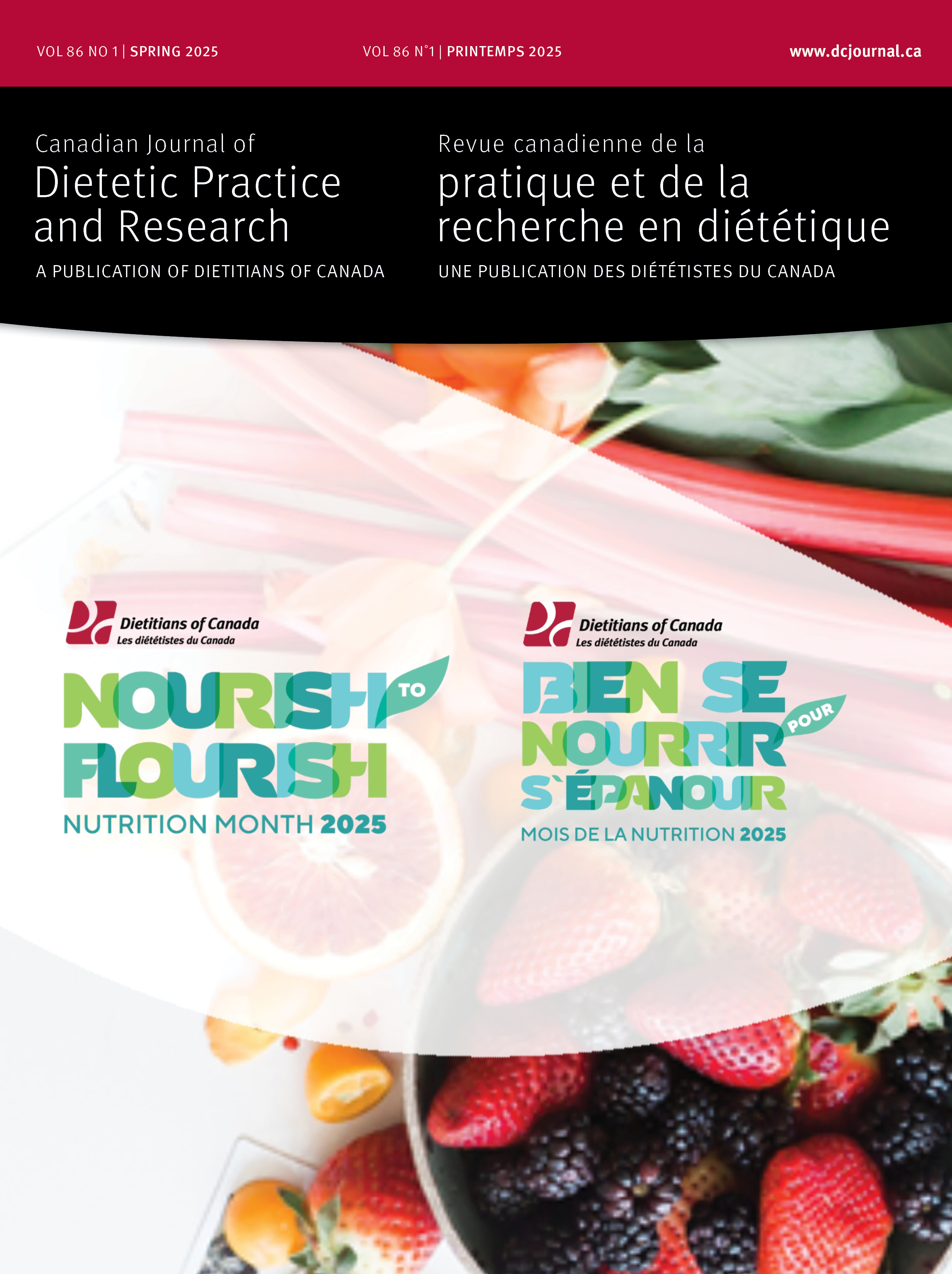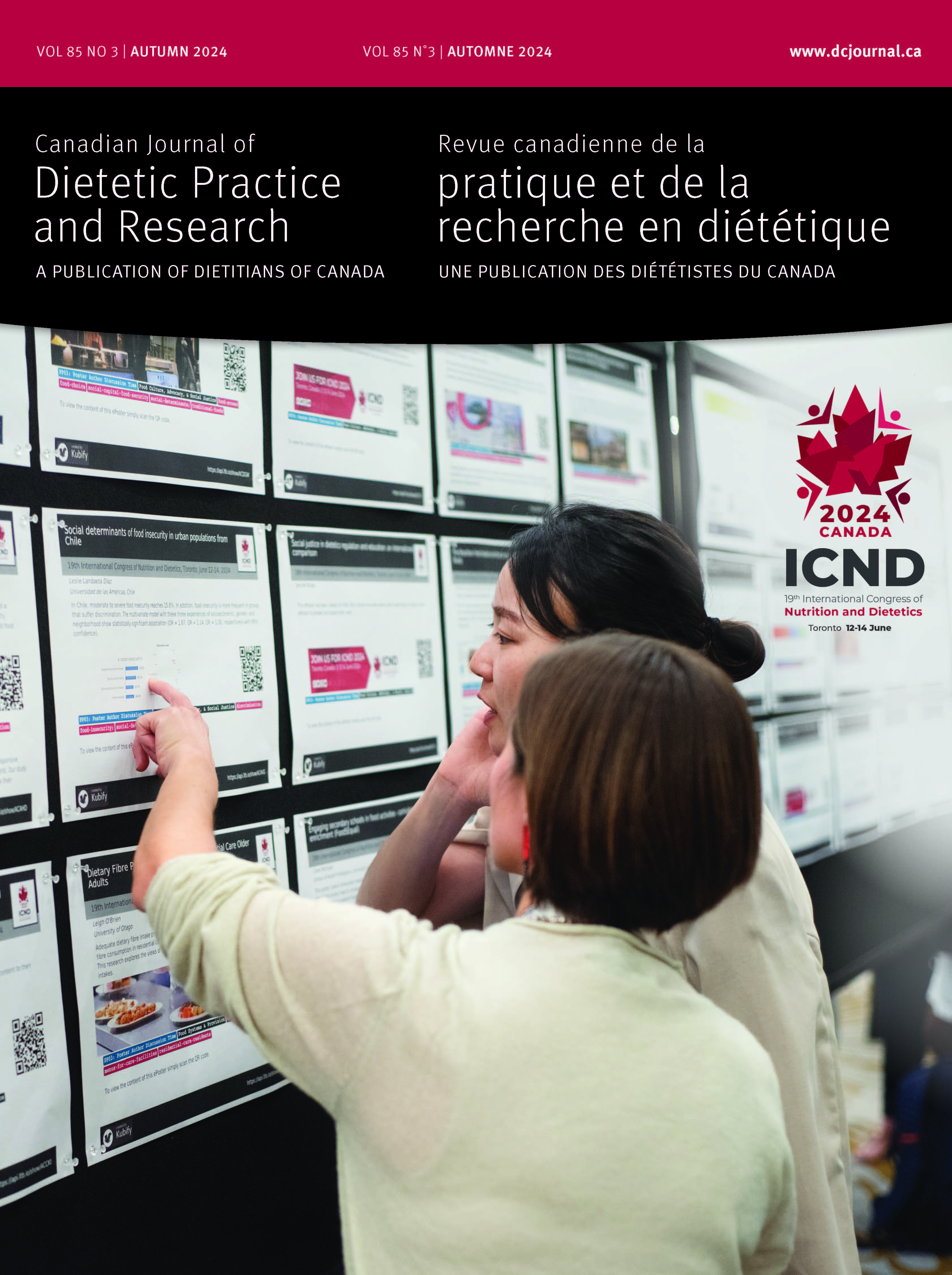Volume 64 • Number 1 • March 2003
Chair’s Message
Editor's Message
Perspectives in Practice
For decades, public health promotion campaigns on bone health have emphasized the importance of adequate calcium and vitamin D intakes, as well as weight-bearing physical activity. However, no obvious consensus has emerged on the role of dietary protein. To identify what agreement does exist in the literature, in this article we review the theoretical basis for protein’s role in bone health, assess some recent cross-sectional and prospective studies, and generate recommendations for practice. There is general agreement in the literature that higher protein intake increases urinary calcium loss; the body compensates for this loss by increasing calcium absorption in the gut, providing that calcium intake is sufficient. A possible explanation for calcium loss, the “acid-ash” hypothesis, is discussed, and suggestions are made about food choices that may counter the calciuric effect of protein. A survey of cross-sectional and prospective studies shows equivocal results, with confounding variables complicating the analysis. Both deficient and excessive protein intakes have been shown to affect bone health negatively, although lower and upper thresholds have not been determined. Practical advice on achieving bone health is given, with an emphasis on the use of Canada’s Food Guide to Healthy Eating in setting dietary goals.
In Canada, professional standards mandate that dietitians should use a client-centred approach to provide nutrition counselling services. Although most dietitians would probably agree that this is an important standard, how this mandate is translated into our daily practice is not always clear. The purpose of this paper is to explore the origins of the “client-centred approach” used in dietetic counselling. A historical review of selected dietetic literature is used to demonstrate the evolution of this term, the multiple meanings associated with it, the remaining ambiguity in dietetic practice today, and the need for further research.
Research
The objectives of this research were to describe the dietary intake and identify risk factors for poor dietary intake in communitydwelling older adults living in the Kingston, Frontenac, and Lennox & Addington Health Unit area. Dietary intake information was collected from a convenience sample of 105 relatively healthy, active older adults (84 women, 21 men) using 24-hour recalls from three non-consecutive days. Risk factors for poor dietary intake were identified through a structured interview. Multiple linear regression was used to generate a model to predict dietary intake, which was measured using a diet score based on Canada’s Food Guide to Healthy Eating. Group averages reflected reasonable diet quality, but some subjects had very low nutrient intakes, particularly of zinc and vitamins B6, B12, and C. On average, women had a lower-than-recommended intake from all food groups, while men consumed adequate amounts of all food groups except milk products. Higher scores indicated better overall diet quality, and the following were significant predictors of a high diet score: “almost always” preparing one’s own meals, food “almost always” or “sometimes/never” tasting good, eating lunch every day, and taking fewer prescription medications. This model requires validation with a larger and more diverse population of community-dwelling older adults.
Report
A facilitated group discussion approach was used to explore how a group of eight low-income consumers perceive, understand, and use the current food label for food-shopping decisions. Meeting for one hour on three consecutive weeks in a community facility, the group discussed the total food package, the ingredient list alone and in combination with the nutritioninformation panel, and nutrition claims. All sessions were recorded and later transcribed verbatim. Through inductive analysis, three broad categories (brand name, package feature, and nutritionrelated information) and numerous underlying themes emerged from the data; a theoretical framework was proposed to explain the data and provide future direction. A number of barriers to effective use of the food label were identified, and some actionable tips for dietetic practice were suggested.
This study included 305 children living in Ontario in 1993. Our objective was to determine the proportion of daily energy and macronutrient intake consumed at breakfast, and the major food groups contributing to this meal. Demographic data were obtained in a parent interview that was part of the prevention project Better Beginnings, Better Futures. A single 24-hour recall among parents indicated that breakfast provided a mean of 1,230 (± 607) kJ. Although only 4.9% (n=15) of children ate nothing at breakfast, 26.9% had <837 kJ. Many (59.7%) had a mid-morning snack; however, children who consumed <837 kJ at breakfast were not more likely to have a snack than were those who had a greater energy intake. The major sources of energy were foods from the milk (27.4%), cereals (22.1%), and breads (14.1%) groups. Energy intake at breakfast was no different in children whose household income was at or above the low-income cutoff than in children whose household income was below the cutoff. While few children missed breakfast, many needed more energy at this meal, and non-economic as well as economic influences on breakfast consumption need to be identified.










